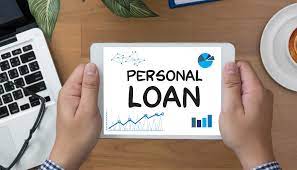 Regardless of why you take out a personal loan, the primary objective is to ease your finances.
Regardless of why you take out a personal loan, the primary objective is to ease your finances.
However, when you start repaying your loan, you might think of refinancing your loan.
What does it mean to refinance your loan?
In simple words, refinancing means applying for an additional loan when you already have one. It does not necessarily have to be from the same lender.
There could be several reasons why you may seek to refinance a loan. But, usually, the primary objective would be to have your debt consolidated.
Ideally speaking, you will stand a better chance at having a lower interest rate.
When to refinance your personal loan?
As mentioned already, in most cases, the primary goal for refinancing is to merge debts.
Nonetheless, there could be other situations too.
You have a better credit score.
One of the reasons could be the improvement in your credit score.
When you timely repay your debts, your credit score is likely to improve. As a result, you may be eligible for a reduction in the interest that you pay.
You can avail a different plan.
It needs no mention that a variable APR can make it challenging to plan your monthly payments.
But, in case you have an improved credit score, you may also be eligible for a fixed APR.
You may wish to avoid a balloon payment.
Notably, some personal loans come with balloon payments.
By refinancing your personal loans, you may get rid of these larger payments at the end of your term.
You may wish for a lower installments.
There could be a situation where either your income may decrease, or expenses may increase.
In such a situation, you might be wishing for a lower monthly payment on your loan.
You want to get rid of your debt quickly.
If you can afford to make more significant payments, you might wish to combine your debts and make a single payment.
Refinancing would also help you reduce the term of your loan.
Why refinance your personal loan?
Having a reason to refinance a loan is not sufficient. Unless certain benefits are available, refinancing could be an added burden to your personal finances.
Of course, there are benefits to reap from a refinancing scheme. But, before applying for refinancing options, it is equally important to know your goals.
The section above has listed plenty of goals that may drive your urgency to refinance.
So, let’s understand what general benefits can refinancing your loan offer you.
Better interest rate
Of course, when you improve your credit score, you’re more likely to receive better interest rates for your new loans.
Quick payoff
As mentioned already, refinancing can help reduce the term of your loan as well. But, you might have to make more significant payments towards your debt.
Extended repayment period
Paying for several loans at a time may sometimes leave you juggling between payment dates and amounts. However, thanks to refinancing schemes, you can make a single payment towards your debt.
Besides, since you’d now have a single loan to pay, you can expect to extend your repayment term.
How to get a lender to refinance your loan?
If you’ve been following up on this article, you’d probably have made up your mind to refinance your loan.
So, we won’t waste any more of your time. Here’s how you can refinance your Personal Loans without any hassle. And also the tips to reap the most of your refinanced debts.
Step 1. Know what you need
Refinancing a loan isn’t strictly all white and black. There are several pitfalls that you may not see at first.
For example, you might think refinancing can get you more money and save you from higher interests, but that’s not entirely true.
Many borrowers often fall prey to the vicious cycle of debt traps.
So, before you do anything else, think about what you need.
Think of the amount you need exactly, not more – not less. And also, think of the payments that you’d be making.
If all fits nicely into your budget, you should then consult with your lender. Ask them about any prepayment penalties that might be applicable for foreclosure of your loan.
Knowing all this beforehand wouldn’t burden you with unnecessary debts.
Step 2. Check your credit score and credit report
The next thing you ought to be doing is check your credit score and history.
As mentioned already, a good credit score and an excellent credit history can get you a lower interest rate. But, to be sure, you need to know if you have a good score or history.
Step 3. Shop for the best rates and terms
Once you’re sure that you are eligible for a better refinancing option, it’s time you start searching for the best plan that you can get.
Although most banks and private lenders will offer you a good quote, do not hop onto the first plan that you’re offered.
Like you shop for your first car, you should shop for your refinanced loan. It would help you compare and buy only the best loan for your personal finances.
And that’s all. Further to this, you can apply for your loan with your existing lender or a new one, depending upon the offers you get.
The takeaway
When you’re looking for a refinancing option for your loan, it’s better to be vigilant.
You need to be more careful to not get trapped in debt cycles.
Refinancing is a great option when you need more money, and you know you can repay it. But, if you have even the slightest of the doubting nibbles, we suggest you rethink your options.
It’s better to make higher payments for your existing loans than to miss out on them altogether. Perhaps, refinancing your loan might land you up in such a situation if you’re not too careful.
So, think before you apply for a refinanced loan. And also, think of how you’ll be making the payments. After all, a loan is a debt, and debts must be repaid, no matter what.


No Comments